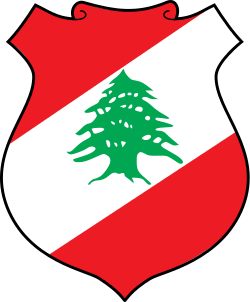Lebanese general election, 1968
 |
| This article is part of a series on the politics and government of Lebanon |
|
General elections were held in Lebanon between 24 March and 7 April 1968.[1] Independent candidates won the majority of seats, although many of them were considered to be members of various blocs. Voter turnout was 49.6%.[2]
Background
According to the 1960 constitution, the 99 seats were divided amongst ethnic and religious groups:[3]
| Group | Seats |
|---|---|
| Maronite Christians | 30 |
| Sunni Muslims | 20 |
| Shi'ite Muslims | 19 |
| Greek Orthodox | 11 |
| Druze | 6 |
| Greek Catholics | 6 |
| Armenian Orthodox | 4 |
| Protestants | 1 |
| Armenian Catholics | 1 |
| Other | 1 |
Results
| Party | Votes | % | Seats | +/– |
|---|---|---|---|---|
| Independents | 60 | –10 | ||
| National Liberal Party | 11 | +4 | ||
| Kataeb Party | 9 | +5 | ||
| Lebanese National Bloc | 6 | +3 | ||
| Progressive Socialist Party | 5 | –1 | ||
| Armenian Revolutionary Federation | 4 | 0 | ||
| Party of the Constitutional Union | 3 | –2 | ||
| Najjadeh Party | 1 | +1 | ||
| Invalid/blank votes | – | – | – | |
| Total | 614,280 | 100 | 99 | 0 |
| Source: Nohlen et al. | ||||
Of the 60 independents:[4]
- 27 were considered part of the Parliamentary Democratic Front and its affiliates
- 14 had no affiliation
- 6 were members of the Assad bloc
- 4 were members of the Skaff bloc
- 4 were members of the Salam bloc
- 3 were members of the Arslan bloc
- 2 in the Jumblatt bloc
References
This article is issued from Wikipedia - version of the 2/28/2016. The text is available under the Creative Commons Attribution/Share Alike but additional terms may apply for the media files.